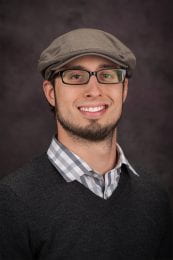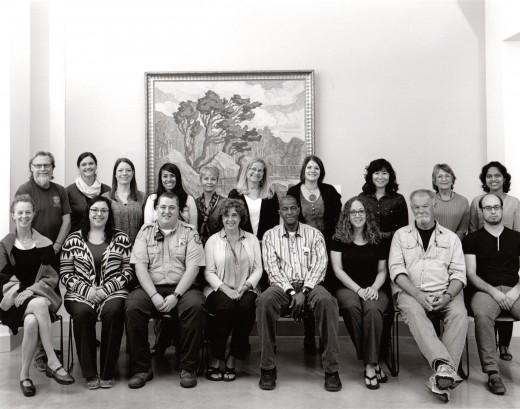 Exhibition Designer and Museum Technology Lead Luke Dempsey created the museum’s new virtual exhibition Waylande Gregory: Art Deco Ceramics and the Atomic Impulse.
Exhibition Designer and Museum Technology Lead Luke Dempsey created the museum’s new virtual exhibition Waylande Gregory: Art Deco Ceramics and the Atomic Impulse.
Below are questions and responses excerpted from a conversation between Communications and Marketing Specialist Jui Mhatre and Dempsey, about the virtual exhibition and other projects and how his interests relate to his current role in the museum.
Before coming to work at the museum, was there a job or other experience that you feel prepared you well for this work?
During my education and career I’ve had the good fortune to learn to leverage the technical facets of art making to communicate with people. What does that mean? If you think back to the Italian Renaissance, the sculptor Filippo Brunelleschi was not just an artist; he was an architect and a mechanical engineer. Aside from that, as if it were not enough to design the Florence Cathedral dome, he is largely credited with inventing the technical description of linear perspective. His background in art, mixed with architecture and engineering, gave him a unique perspective into what really matters when designing spaces that have a voice. His story is one that I really resonate with and draw inspiration from; except in my case it is computers, coding, and discovering ways technology plays a role in the creative communication and storytelling process. We could only hope to be as good as Brunelleschi.
What recent project has been satisfying for you personally and why?
Recently, due to COVID-19, we at the Beach have decided to do something that museums have resisted doing since the dawn of the internet – create online exhibitions. “Why so much resistance?” you might ask. Museums are largely institutions that store physical objects, which are often best experienced in person, or so the argument goes (topic of contention). We have realized that technology is good enough now that we can bring some of that in-person experience to the safe comfort of your hopefully COVID-19 free environment. Ultra-high-resolution images, VR, AR, virtual walkthroughs, good old text-on-a-web-page, and video content, are just some of the tools that we leverage or plan to leverage in the future. We recently published our first online exhibition, Waylande Gregory: Art Deco Ceramics and the Atomic Impulse, which I am proud to have been a part of as the designer and builder, co-curated by independent scholar Tom Folk and our fantastic Curator Liz Seaton.
Is there an upcoming program or exhibition at the museum to which you especially look forward?
We have several other online exhibitions planned, including a really brilliant look at some of the work photographer Gordon Parks gifted to K-State in the ‘80s, which is curated by our very own Aileen June Wang and Sarah Price. We also plan to publish some of our past exhibitions online so that they can be used for educational purposes, digital archiving, and of course for the life-long learners that want to go back and experience some of our select past exhibitions. Watch out for feature updates to our current exhibitions.

